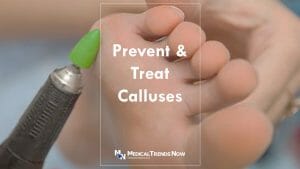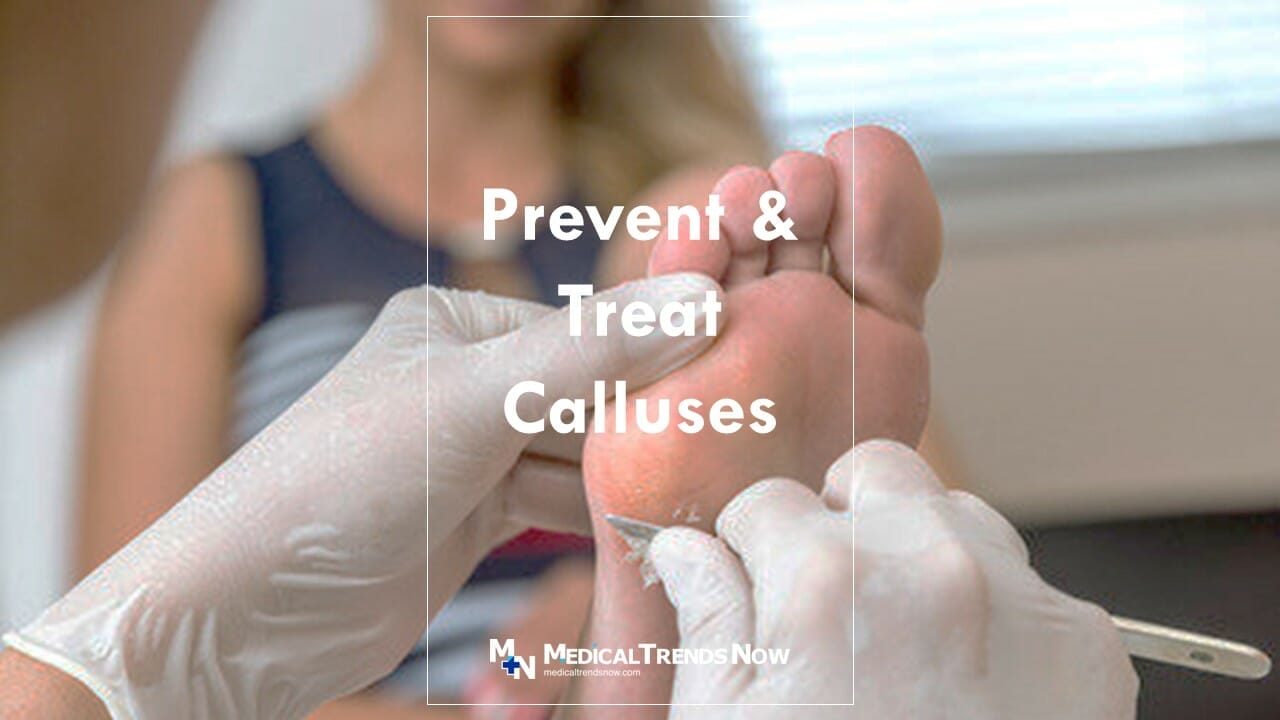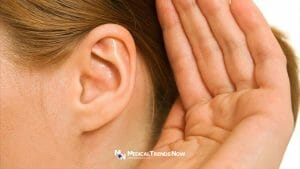Table of Contents
Calluses are hard, flat patches on the skin that can form from friction or repeated pressure. They’re common on the heels, balls of the feet, and other areas where people frequently stand or walk. Although they can be unsightly, calluses can also be a sign of good health.
Learn all about calluses – what they are and how to prevent and treat them. Find out the most commonly used methods to get rid of calluses and keep your skin healthy!
What are calluses?
A callus is a thickened area of skin that forms as a response to pressure or friction. They are typically found on the feet or hands and can sometimes be painful. Calluses are a sign that your skin is trying to protect itself from further damage, and they can help you perform better in activities that require extensive use of the hands or feet. Calluses can form in various ways, including walking on hard surfaces, running, or playing sports. They can also be caused by wearing shoes that do not fit properly and by occupations that require frequent use of the hands.

What causes calluses?
Calluses are caused by an accumulation of dead or keratinized skin cells that form an area of protection to the underlying tissue. The most common cause of calluses is wearing ill-fitting shoes that rub against the feet, forcing the skin to thicken and toughen to protect itself from friction. Calluses can also be caused by repetitive activities such as playing sports or a musical instrument, gardening, lifting weights, and even typing on a computer keyboard. In addition to ill-fitting shoes and repetitive motions, calluses can be caused by certain medical conditions such as psoriasis or eczema. People with diabetes are particularly prone to developing calluses due to poor circulation and nerve damage. If left untreated, calluses can become painful, especially when pressure is applied.
What are the signs and symptoms of calluses?
Calluses are areas of thickened skin that typically form on the hands, feet, and other body areas exposed to friction or pressure. They are most common on the hands and feet, where they form due to repeated pressure or friction. Calluses can be uncomfortable and can cause pain if left untreated. Signs and symptoms of calluses include:
- Thick, hardened skin
- Pain or tenderness
- Discoloration or yellowish tint
- Itching or burning sensation
- Flaking of the skin surface
- Rough texture

Treatments for calluses
- Use a pumice stone to rub away the hard skin of the callus gently.
- Soak the callus in warm water for 10-15 minutes before trying to remove it.
- Apply lotion or petroleum jelly to soften the skin, making removing it easier.
- Wear comfortable shoes that provide enough room for your feet to move and don’t rub against the callus.
- Apply medicated pads or creams that contain salicylic acid or urea, which help break down hard skin.
- Use a foot file or emery board to file away the dead skin on the callus carefully.
- See a podiatrist for professional treatment if necessary.
How to prevent calluses?
Calluses are common skin conditions caused by repetitive friction or pressure against the skin. If left untreated, calluses can become thick and painful. Fortunately, there are ways to prevent and treat calluses to maintain healthy feet. Start by wearing properly-fitted shoes to reduce friction on the feet.
Additionally, try using cushioned insoles for extra support. Change your socks at least once a day and keep them clean to avoid additional irritation. Try to avoid activities that cause excessive rubbing, such as running barefoot or wearing tight shoes. It’s also helpful to give your feet a break when possible by avoiding prolonged standing or walking.
Finally, if you already have calluses, use a pumice stone to gently exfoliate the area, and then apply a moisturizing cream to keep the skin hydrated. With these tips, you can prevent or reduce the appearance of calluses and maintain healthy feet.

Complications from calluses if left untreated
Calluses are common and generally harmless; however, they can cause more serious complications if left untreated. Calluses are areas of thickened, hardened skin that form due to repeated friction and pressure. While they can be painful and uncomfortable, they can usually be managed with a few simple steps. However, if left untreated, calluses can cause further issues, including infection, inflammation, and even ulceration.
Infection is a common complication when calluses become wet and soften. The softened skin makes it easier for bacteria to enter and cause infection. This can lead to inflammation, discomfort, and even skin ulceration. If you suspect that you have an infection from a callus, it is important to seek medical attention as soon as possible. In addition to infection, calluses can also irritate to surround the skin as well as impede the natural movement of tendons or joints. If left untreated for a long time, calluses can even become malignant – something that is easily avoided with proper care and attention. Taking care of calluses from the onset is the best way to avoid any serious complications. By using moisturizers and pads or protecting the area with shoes or socks, you can reduce the risk of further complications arising from calluses.
FAQs
Who is at risk of getting calluses?
Calluses are an area of thickened skin caused by friction or pressure. They are a common condition and can appear anywhere on the body where pressure or friction is present. Those at risk of developing calluses include people who stand on their feet for long periods, such as nurses, factory workers, and athletes who use their hands or feet in their sport, such as baseball players and gymnasts.
Additionally, those who wear tight-fitting shoes and socks may also be at risk for developing calluses, and people who use tools to do manual labor, such as construction workers and gardeners. People with certain medical conditions, such as diabetes, can also be more prone to getting calluses due to poor circulation.
Finally, those with dry skin can be more likely to develop calluses due to lack of moisture. In all cases, it is important to take steps to prevent calluses from forming in the first place. If a callus does form, it is important to take steps to treat it properly so that it does not become infected or cause discomfort.
Is there a home remedy for calluses?
Calluses are an accumulation of hard, thickened skin that forms in response to repetitive friction, pressure, or other irritation. Although they can be painful and unsightly, calluses are a natural defense the body produces to protect the skin. If you’re looking for a home remedy to help reduce the appearance and discomfort of calluses, there are several treatments you can try.
First, soak your feet in warm water with some Epsom salts to soften the skin. Then gently use a pumice stone or emery board to exfoliate the areas with calluses. Afterward, apply a moisturizing cream or lotion to help keep the area hydrated.
Additionally, you can wear gloves during activities that may cause friction to help prevent calluses from forming. Finally, if your calluses are still causing discomfort, consider visiting a podiatrist for professional treatment. With these simple steps, you can reduce the appearance and discomfort of calluses in the comfort of your home.
Which doctor can treat Calluses?
Calluses are a common skin condition that can affect people of all ages. These thick, hardened areas of skin are often caused by repeated friction or pressure on an area of the body and can cause discomfort and pain if left untreated. The good news is that there are doctors who specialize in treating calluses and can provide relief from the symptoms associated with them.
For those seeking treatment for their calluses, a podiatrist is the best doctor to consult. Podiatrists specialize in foot and ankle care, including diagnosis and treatment for various skin conditions such as calluses, corns, warts, ingrown toenails, plantar fasciitis, and more. They use a variety of treatments such as medications like topical creams or oral medications to reduce symptoms and also offer advice on ways to prevent future occurrences.
Dermatologist doctors can also provide advice on how to prevent and treat calluses. A dermatologist performs a thorough examination of the skin, including the feet, and makes recommendations for treatment based on his or her findings.
Takeaway: What Are Calluses? How to Prevent and Treat Them
In conclusion, calluses can develop on any body part but are most common on the feet and hands. They can be caused by various activities, including walking, working, or playing sports. If calluses are not treated, they can become infected and cause pain and inflammation. Several ways to prevent and treat calluses include using a foot file, soaking in warm water and Epsom salts, or applying a topical cream or ointment.
Sources
- Corns and calluses – Symptoms and causes – Mayo Clinic
- Corns and Calluses: Symptoms, Treatment & Care Tips – Cleveland Clinic
- Corns and calluses Information | Mount Sinai – New York
- Corns and calluses: What’s the difference and how can I treat them – Medical News Today
- How to treat corns and calluses – American Academy of Dermatology
- Corns and calluses – NHS
- Understanding Corns and Calluses — the Basics – WebMD
- Calluses and Corns – MyHealth Alberta
- Calluses and Corns | Cedars-Sinai
Disclaimer
This website is intended to educate both members of the general public and those working in the medical field on the prevalence, causes, and methods for preventing, diagnosing and treating diseases that affect people throughout their lives. This website’s content is provided solely for informational reasons and is not meant to serve as a substitute for the advice of a qualified medical practitioner.













